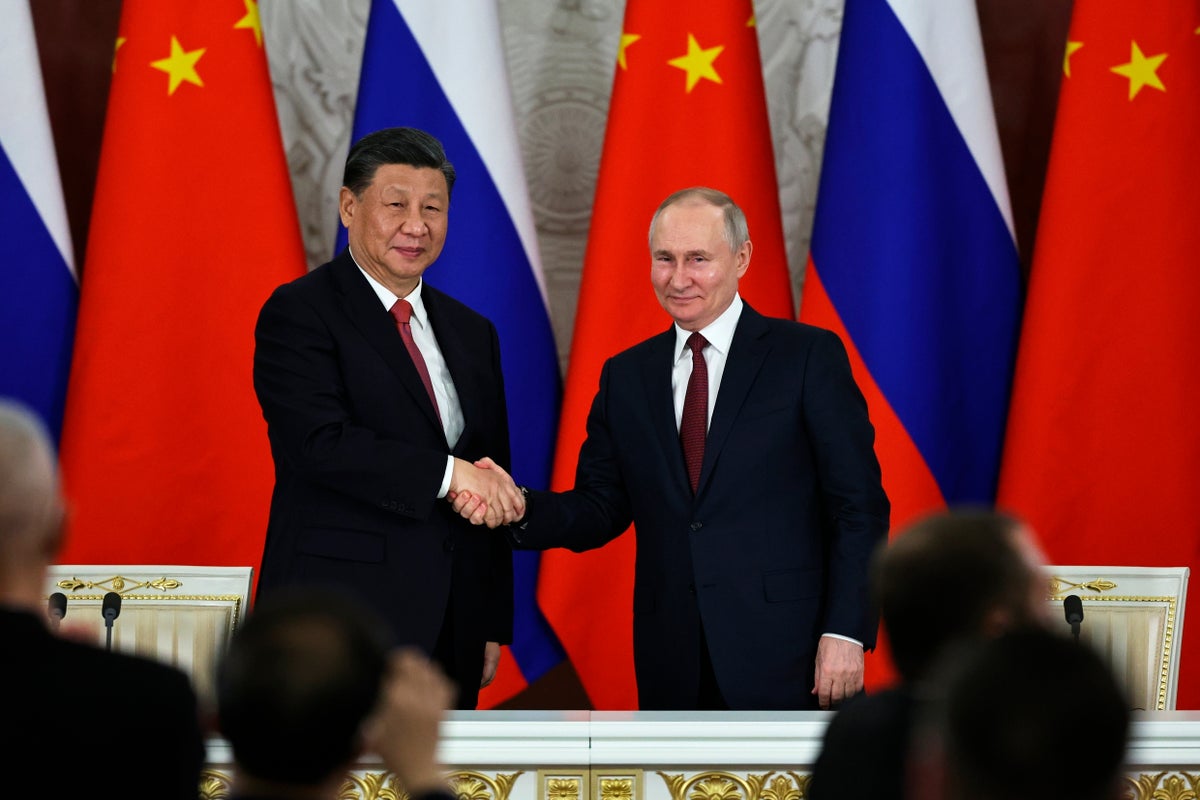
Chinese leader Xi Jinping just concluded a three-day visit with Russian President Vladimir Putin, a warm affair in which the two men praised each other and spoke of a profound friendship. It’s a high point in a complicated, centuries-long relationship during which the two countries have been both allies and enemies.
Chinese and Russian states have loomed large in each other’s foreign affairs since the 17th century, when two empires created a border with a treaty written in Latin.
When you share thousands of miles of border with a neighbor, you're either going to get along very well or very badly. Beijing and Moscow have done both.
“China and Russia relations have always been uneasy,” said Susan Thornton, a former diplomat and a senior fellow at the Paul Tsai China Center at Yale Law School.
"THE SOVIET UNION’S TODAY IS OUR TOMORROW"
The People’s Republic of China was founded in 1949, following a brutal Japanese occupation during World War II and a bloody civil war between the Nationalist and Communist Parties.
Russia was part of the Soviet Union, a global superpower, while China was poor, devastated by war and unrecognized by most governments. Communist leader Mao Zedong was junior to Josef Stalin, who led the Soviet Union until his death in 1953.
The early People’s Republic depended on the Soviet Union for economic aid and expertise. In 1953, the slogan that appeared in Chinese newspapers was “The Soviet Union’s today is our tomorrow.” The Soviets sent some 11,000 experts in 1954-58 to help China rebuild after its civil war, according to Joseph Torigian, an associate professor at American University’s School of International Service.
The two countries also had a formal military alliance, but Moscow decided against giving China the technology for nuclear arms.
SINO-SOVIET SPLIT
But there were points of friction, especially after the death of Stalin.
In 1956, then-Soviet Premier Nikita Khrushchev condemned Stalin’s “cult of personality” at an international conference of communist parties. Mao, who had modeled himself on the former Soviet leader, took it personally.
When Mao decided to shell two outlying islands of Taiwan held by the Nationalist Party he had defeated in the Chinese civil war, he did not warn Khrushchev. Khrushchev saw it as a betrayal of the alliance, Torigian said. In 1959, the Soviet Union remained neutral during a border conflict between China and India, which led China to feel that it was not getting enough support from its ally.
The relationship soured until the two countries broke off their alliance in 1961 in the Sino-Soviet Split.
They quickly became open rivals. Beijing blasted Moscow for “phony communism” and revisionism, or straying from the Marxist path. Soldiers clashed along their borders in China's northeast and the western region of Xinjiang.
US-CHINA-RUSSIA TRIANGLE
The Sino-Soviet Split left Beijing isolated, but set the stage for outreach to the United States. In 1972, the revolutionary communist state welcomed President Richard Nixon for a visit that paved the way for global recognition of Mao’s government and for the U.S. and China to enter into a tacit alignment against Moscow.
The 1990’s led to a rapprochement between China and Russia after the collapse of the Soviet Union. The two countries formally settled their border disputes.
In the years since, the world has changed greatly, as have the fortunes of the two countries. China is now the world’s second-largest economy, while Russia’s economy was stagnating long before its invasion of Ukraine last year. Today, it is China facing the U.S. in a strategic competition fueled by intense nationalism on both sides.
Once again, Moscow and Beijing are finding common ground. Under Xi Jinping, “repairing the damage and cultivating the relationship has gone much faster than it has ever before,” Thornton, the former diplomat, said.
LEADERS SEE EYE TO EYE
Meanwhile, the similarities between the two leaders, as well as their personal relationship, has helped ties grow.
Both Xi and Vladimir Putin see Western attempts to spread democracy as an attempt to de-legitimize themselves, and they believe that authoritarian regimes are better for confronting the challenges of the modern world. Russia supplies energy and China exports manufactured goods to Russia.
And while some analysts and commentators have started saying that China is now the senior partner in the relationship, given the history, it’s not necessarily how that’s viewed in China.
Russia’s hold over China is not only historical, but also cultural. Students read translated Russian stories and poems in their literature classes, while many educated Chinese of an older generation learned Russian instead of English.
“Many Chinese people, including elites, have not yet realized the historic reversal of China’s comprehensive national strength compared to Russia,” wrote Feng Yujun, a prominent Russia scholar at Shanghai’s Fudan University, in an article published last month that was shared widely. Feng declined to be interviewed.
“Although China’s national strength is now ten times that of Russia, the biggest challenge is that many Chinese people are still subservient to Russia ideologically,” he wrote.
—
AP news researcher Wanqing Chen contributed to this report from Beijing.







